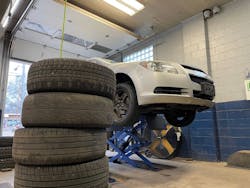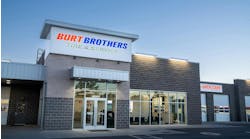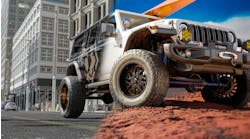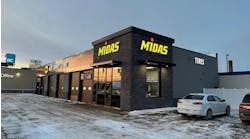Rewind to the first quarter of 2022. There was an abundance of factors affecting the retail market. And the buzz was that we were most certainly in for a tough time as the price of most everything we could want or need was now at an eye-popping and almost excruciating level.
On top of that, new car sales were plummeting due to the chip shortage. Used car sales were on the fast track to hitting top pricing. The price of gas was a super-hot topic, too.
Then things started to change, Miles driven, both consumer and commercial, were on the rise. Consumers were spending more and opening more credit accounts, while allowing their balances to increase — in some cases, by 10% to 13%. Meanwhile, the big wild card, international tension, had yet to fully play out yet. (Sadly, it still hasn’t played out and we should all keep our fingers crossed.)
So looking back on 2022 — and everything that could have done, should have done and actually did transpire — how did we, the tire dealer community, do? Let’s look at some numbers. The results I’m going to share with you come directly from an exclusive group of 56 tire dealership owners, representing more than 300 locations from across the United States. All sell tires and provide auto service and have anywhere from one store to 66 locations. Most are longtime members of the Dealer-to-Dealer Development Group. Some have been with the group for as many as 12 years.
How did they perform? Let’s start at the top by examining mix of business. Generally, the healthier your mix of parts and service labor sales to tire sales, the healthier your gross profit line. Why? No two dollars are created equal on the gross line. One tire dollar at 24% isn’t quite as valuable as a part dollar at 52% and a service labor dollar at 100%. (The more service labor and parts dollars you have for every tire dollar, the healthier your gross dollars and percentages are.)
In 2022, we saw parts and service gain significant ground. Tires, as a percent of total sales, took a 2.5% dip. Parts picked up 0.5%, while service labor grabbed an impressive 2% more versus 2021. From a mix perspective, this is a healthy indicator that owners had a greater share of each dollar at their disposal to distribute to either payroll, non-payroll operating expenses or the net line. This also is an indication that a greater share of attention went to labor rates than parts margins, though auto parts shortages in 2022 likely didn’t help.
In 2022, the building blocks within the mix of business changes made throughout the year showed up rather profoundly. The average sales dollars per invoice increased to $348 per invoice, a 13% lift. Gross profit dollars per invoice cruised to $181 per invoice, a 14% lift. All told, the total gross profit percent for members of the Dealer-to-Dealer Development Group jumped an entire percentage point from 51% to 52%. While a 1% change in gross profit percent may not sound like much, it’s a huge shift when taking into consideration the average spread across 300 locations.
Also consider that the average sales per location for a member of our group came in at $2.62 million, a 5.2% lift year over year. Altogether, on average, that 1% gross profit lift gave members an additional $150,000 per location to play with. That average was with almost all members seeing significant improvements.
So how did our members spend those extra dollars? Whether by choice or force, pay rates increased — and thankfully so. We benchmark payroll as a percent of gross profit — not sales or labor. We view team members as the most important and significant piece of any tire dealer’s businesses. It just makes good sense.
In 2022, we saw the average payroll percent of gross profit remain relatively flat, indicating that those additional gross dollars we discussed earlier landed in team members’ pockets, as they should. From a non-payroll operating expense perspective, we saw some operational discipline even in the face of inflation, as a percentage of sales that was quite flat year over year, coming in at 20% of sales. This is a healthy equation for a healthier net line — and that’s exactly what happened.
While the markets over the past few years have given us plenty to wonder about, most of us — certainly those who are utilizing the strength of other independents around them to help build their businesses — proved that 2022 was a really solid year for the independent tire dealer. Here’s to making 2023 be the best it can be!




